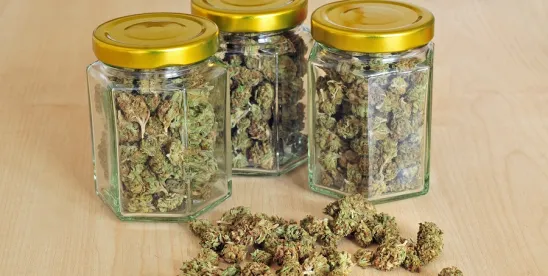To help close New York’s $6 billion budget gap, Governor Andrew Cuomo introduced legislation that would legalize adult-use cannabis within the state as part of his proposed budget for fiscal year 2021, anticipating that tax revenue could bring in hundreds of millions of dollars over the next several years. Since the New York State Legislature must approve the budget by April, New York could see adult-use cannabis become a reality within the next few months.
The revamped Cannabis Regulation and Taxation Act (CRTA) includes new social justice initiatives to help those communities disproportionally affected by the drug war, allows for on-site cannabis consumption, and creates a three-tiered licensing scheme similar to New York’s Alcoholic Beverage Control Law. The Act would create a centralized Office of Cannabis Management to oversee the state’s medical marijuana program, adult-use program and hemp program. Led by an executive director, the Office of Cannabis Management also would include a “cannabis control board” comprising five board members appointed by the governor. Among a slew of delegated tasks, the board would be charged with approving social and economic equity plans, approving the type and number of licenses, creating new licenses and promulgating rules for the cannabis regime.
The executive director would have the authority to limit the number, scope and availability of licenses and permits to be issued for cannabis-related activities. In addition, the executive director would be required to appoint a deputy director for health and safety and a deputy director for social and economic equity.
Adult-Use Cannabis
In legalizing recreational cannabis for adults 21 years of age and older, CRTA creates six license categories:
-
Cultivator license
-
Processor license
-
Cooperative license
-
Distributor license
-
Retail dispensary license
-
On-site consumption license.
Like New York’s Alcoholic Beverage Control Law, CRTA prohibits vertical integration, banning overlapping ownership interest across multiple license categories. For example, persons or entities holding a cultivator license are prohibited from holding a retail dispensary license and cannot have any direct or indirect interest in one.
Cultivator licensees are permitted to plant, grow, clone, harvest, dry, cure, grade and trim adult-use cannabis. Licensees also can obtain one processor’s license and one distributor’s license.
Processor licensees are permitted to blend, extract, infuse, package, label, brand and sell cannabis products to licensed distributors.
Distributor licensees are permitted to distribute and sell cannabis from a licensed processor, microbusiness cultivator or adult-use cooperative to a licensed dispensary. Distributors are expressly permitted to charge fees for distributing cannabis based on the volume of cannabis distributed.
Retail dispensary licensees are permitted to sell cannabis on their licensed premises to retail consumers. Licensees can have up to three retail locations.
Retail dispensary licensees also can have an on-site consumption license, provided that they notify the municipality in which the on-site consumption site resides. The provisions governing on-site consumption licenses are noticeably vague and, unlike prior versions of the legislation, there are no restrictions regarding the amount of cannabis, or form factors of cannabis, consumers can purchase. The vague provisions that inevitably will be circumscribed by regulators could open the door for a new and burgeoning market sector.
The legislation also requires the Office of Cannabis Management to create an economic equity plan that actively promotes racial, ethnic and gender diversity in the adult-use cannabis industry. The plan must (1) prioritize applicants who qualify as a minority, a women-owned business, a social equity applicant or a disadvantaged farmer and (2) positively impact areas that have been harmed through disproportionate enforcement of the war on drugs.
In addition to adult-use licenses, CRTA establishes various “special-use” permits for ancillary businesses. These permits include:
-
Nursery permit to produce clones, immature plants and seeds
-
Solicitor’s and broker’s permit to solicit cannabis orders and broker transactions for commissions
-
Delivery permit to authorized cannabis dispensary licensees or third parties to deliver cannabis directly to consumers
-
Caterer’s permit to authorize the service of cannabis products at a function or event in a hotel, restaurant, club or ballroom.
Licensees also are expected to abide by strict packaging, labeling and advertising restrictions. CRTA sets forth various requirements that the Office of Cannabis Management must include in its regulations applicable to protect consumers and the general public.
Like last year’s legislation, counties or cities can opt out of the adult-use plan. However, they must have 100,000 or more residents and adopt a local law or ordinance by a majority vote of the governing body.
The 10 Registered Organizations (ROs) that currently have medical marijuana licenses will not be grandfathered automatically into the adult-use program. CRTA gives the executive director authority to grant some or all of the ROs the ability to cultivate, process, distribute and sell adult-use cannabis products without abiding by the restrictions that prohibit overlapping ownership interests across tiers. The Office of Cannabis Management will have the authority to hold a competitive bidding process to determine which ROs will be entitled to this exemption. Alternatively, ROs can apply for any adult-use cannabis license, but they will be subject to the ownership interest restrictions.
Medical Marijuana
CRTA leaves New York’s existing medical marijuana regime largely intact, and includes only a handful of changes. Significantly, certified patients are permitted to grow their own cannabis at home for medical use. Moreover, the Office of Cannabis Management is authorized to license additional medical marijuana providers over and above the 10 currently operating in the state.
Under CRTA, hospitals, nursing homes and other care facilities can register as designated caregiver facilities, permitting the facilities to possess, deliver, transport or administer medical cannabis to certified patients under its care.
Finally, CRTA creates a “cannabis research license” that permits a licensee to produce, process, and purchase and possess cannabis for clinical studies and to research the efficacy and safety of using cannabis as part of medical treatment.
Cannabinoid Hemp and Hemp Extract
The proposed hemp legislation is nearly identical to the hemp bill signed into law by Governor Cuomo in late 2019, and creates a cannabinoid hemp processor license to process cannabinoid hemp used for human consumption. CRTA also creates a cannabinoid hemp retailer license, requiring retailers who sell hemp for human consumption to consumers to be registered and licensed with the state.
The legislation permits the Office of Cannabis Management to promulgate packaging and labeling regulations, requiring processors to include information such as serving sizes and dosages, active cannabinoid concentration per serving size, and the growing region, state or country of origin of the hemp.
Unlike prior versions of hemp legislation, there is no prohibition against adding cannabinoids to foods or beverages.



 />i
/>i

